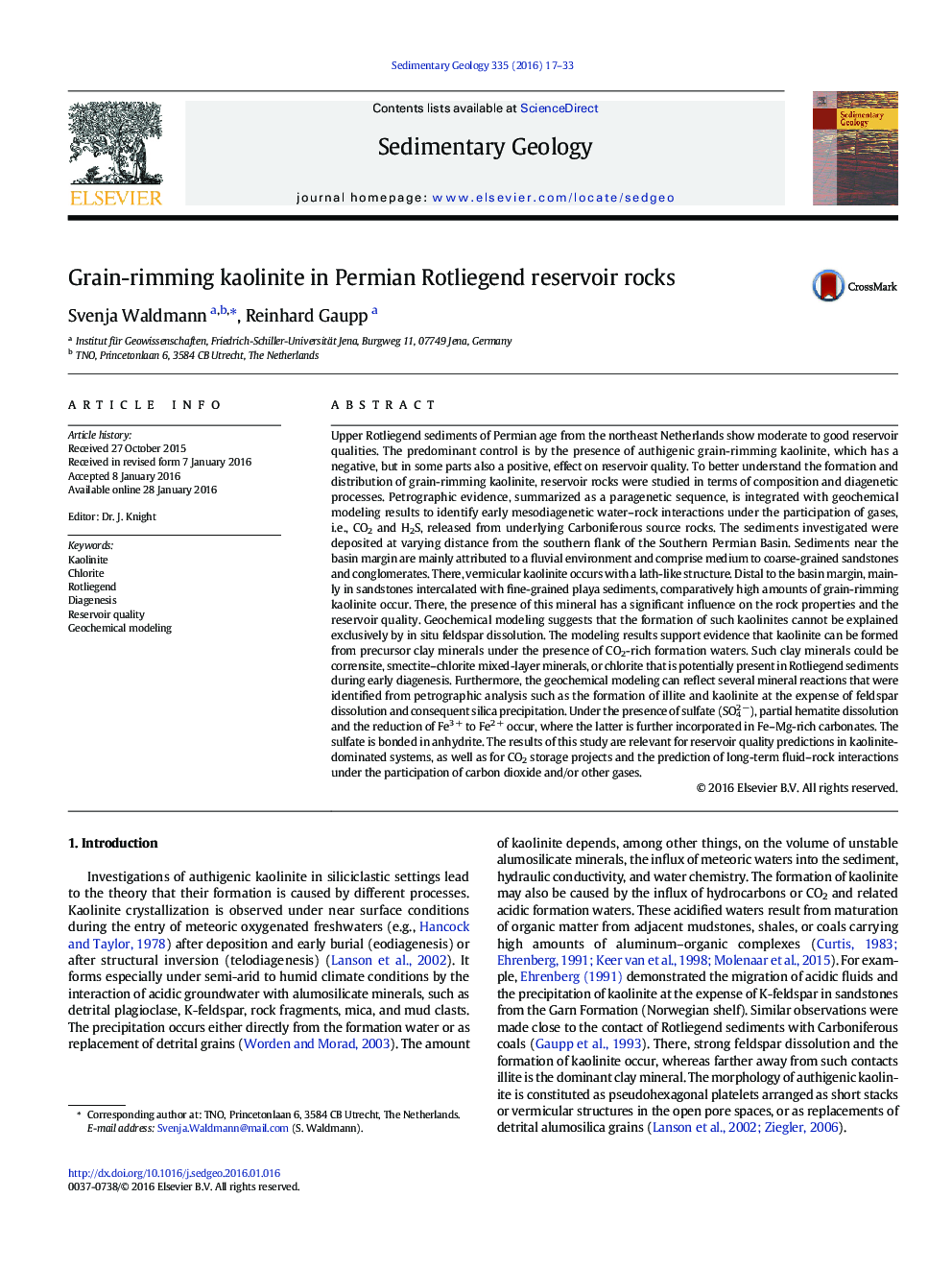| کد مقاله | کد نشریه | سال انتشار | مقاله انگلیسی | نسخه تمام متن |
|---|---|---|---|---|
| 4689087 | 1636028 | 2016 | 17 صفحه PDF | دانلود رایگان |

• Occurrence of grain-rimming kaolinite in Rotliegend reservoir rocks
• Link between diagenesis, environmental conditions, and basin evolution
• Transformation of precursor corrensite/chlorite to kaolinite under CO2 abundance
• Successful thermodynamic modeling of diagenetic processes
• Relevant results for reservoir quality prediction and CO2-related mineral reactions
Upper Rotliegend sediments of Permian age from the northeast Netherlands show moderate to good reservoir qualities. The predominant control is by the presence of authigenic grain-rimming kaolinite, which has a negative, but in some parts also a positive, effect on reservoir quality. To better understand the formation and distribution of grain-rimming kaolinite, reservoir rocks were studied in terms of composition and diagenetic processes. Petrographic evidence, summarized as a paragenetic sequence, is integrated with geochemical modeling results to identify early mesodiagenetic water–rock interactions under the participation of gases, i.e., CO2 and H2S, released from underlying Carboniferous source rocks. The sediments investigated were deposited at varying distance from the southern flank of the Southern Permian Basin. Sediments near the basin margin are mainly attributed to a fluvial environment and comprise medium to coarse-grained sandstones and conglomerates. There, vermicular kaolinite occurs with a lath-like structure. Distal to the basin margin, mainly in sandstones intercalated with fine-grained playa sediments, comparatively high amounts of grain-rimming kaolinite occur. There, the presence of this mineral has a significant influence on the rock properties and the reservoir quality. Geochemical modeling suggests that the formation of such kaolinites cannot be explained exclusively by in situ feldspar dissolution. The modeling results support evidence that kaolinite can be formed from precursor clay minerals under the presence of CO2-rich formation waters. Such clay minerals could be corrensite, smectite–chlorite mixed-layer minerals, or chlorite that is potentially present in Rotliegend sediments during early diagenesis. Furthermore, the geochemical modeling can reflect several mineral reactions that were identified from petrographic analysis such as the formation of illite and kaolinite at the expense of feldspar dissolution and consequent silica precipitation. Under the presence of sulfate (SO42 −), partial hematite dissolution and the reduction of Fe3 + to Fe2 + occur, where the latter is further incorporated in Fe–Mg-rich carbonates. The sulfate is bonded in anhydrite. The results of this study are relevant for reservoir quality predictions in kaolinite-dominated systems, as well as for CO2 storage projects and the prediction of long-term fluid–rock interactions under the participation of carbon dioxide and/or other gases.
Journal: Sedimentary Geology - Volume 335, 15 April 2016, Pages 17–33